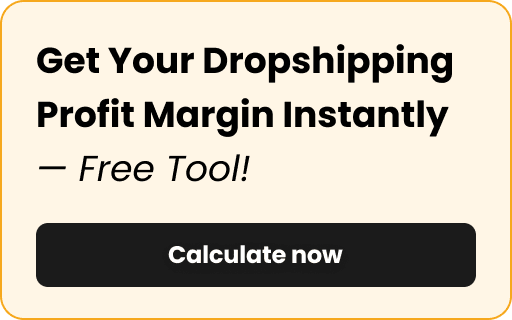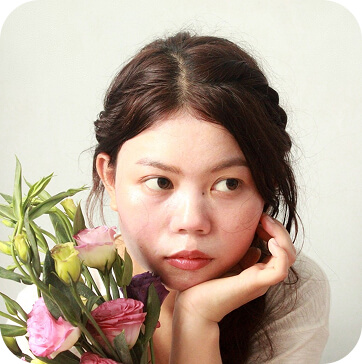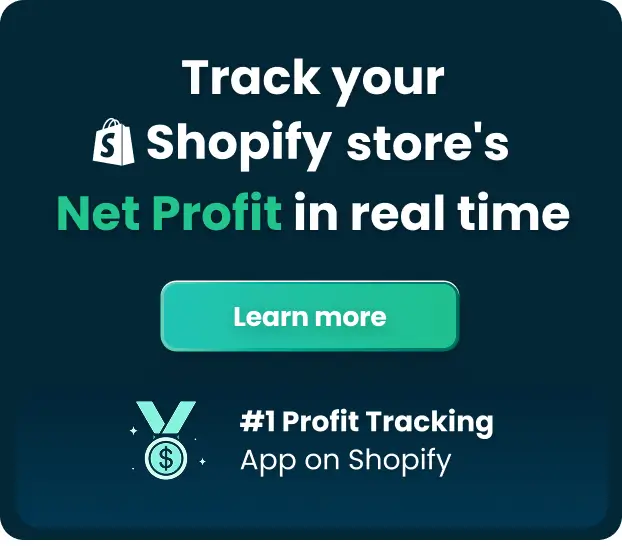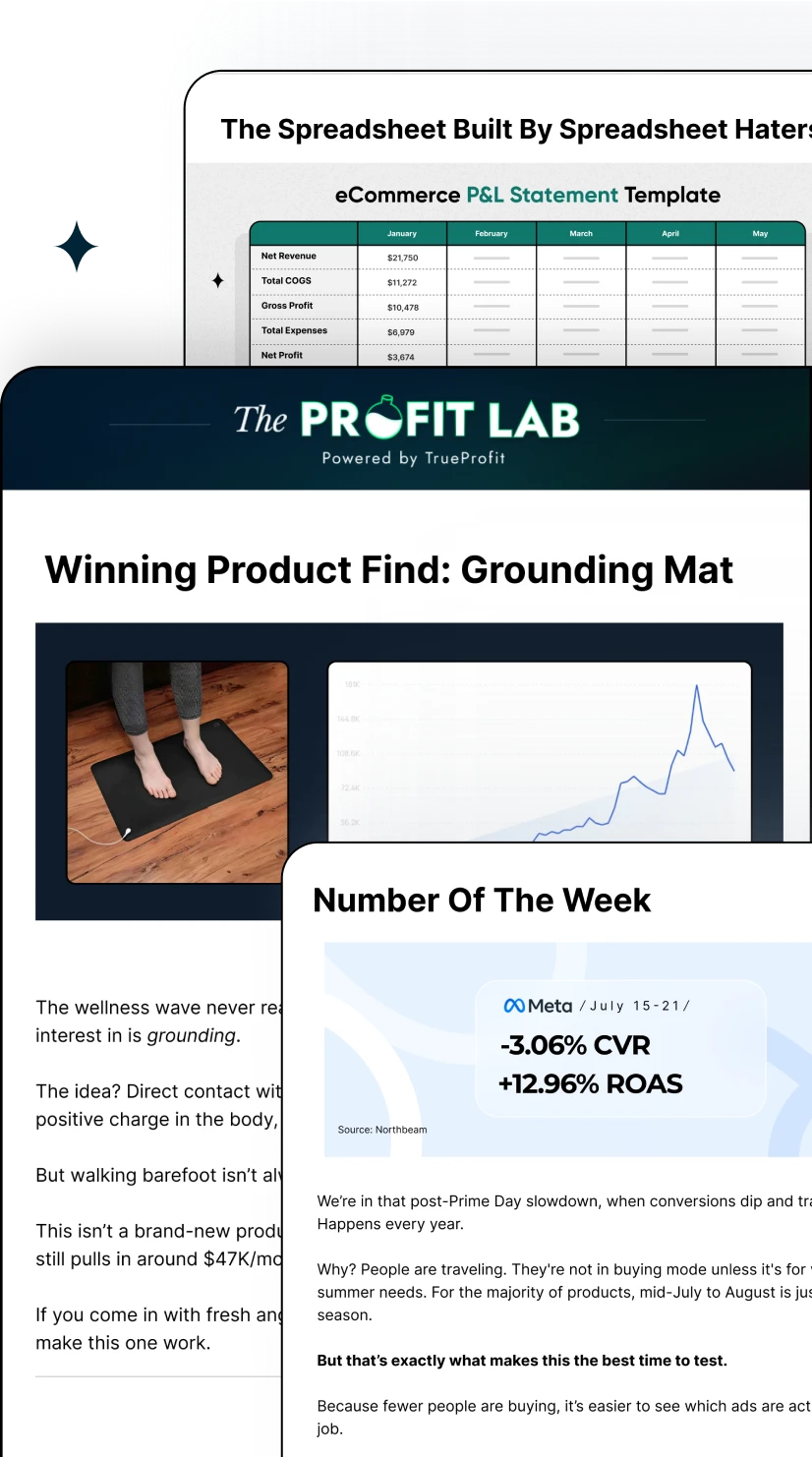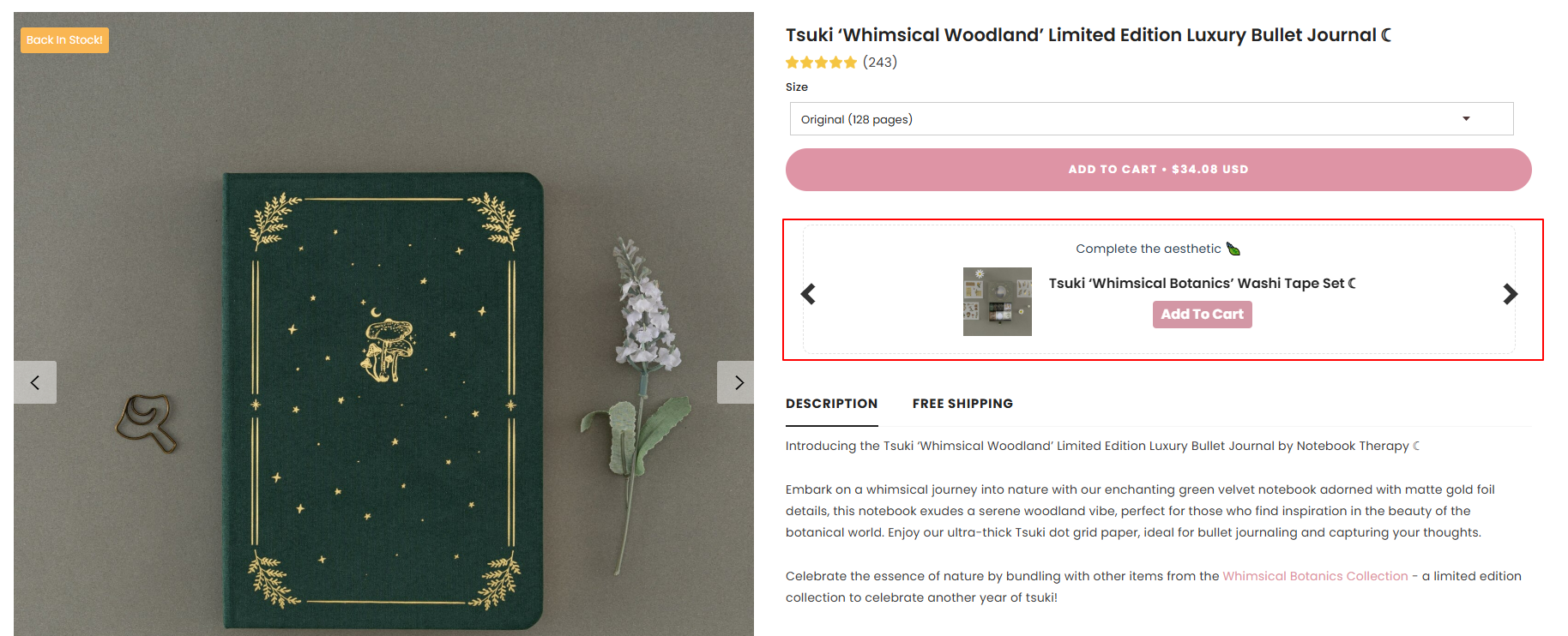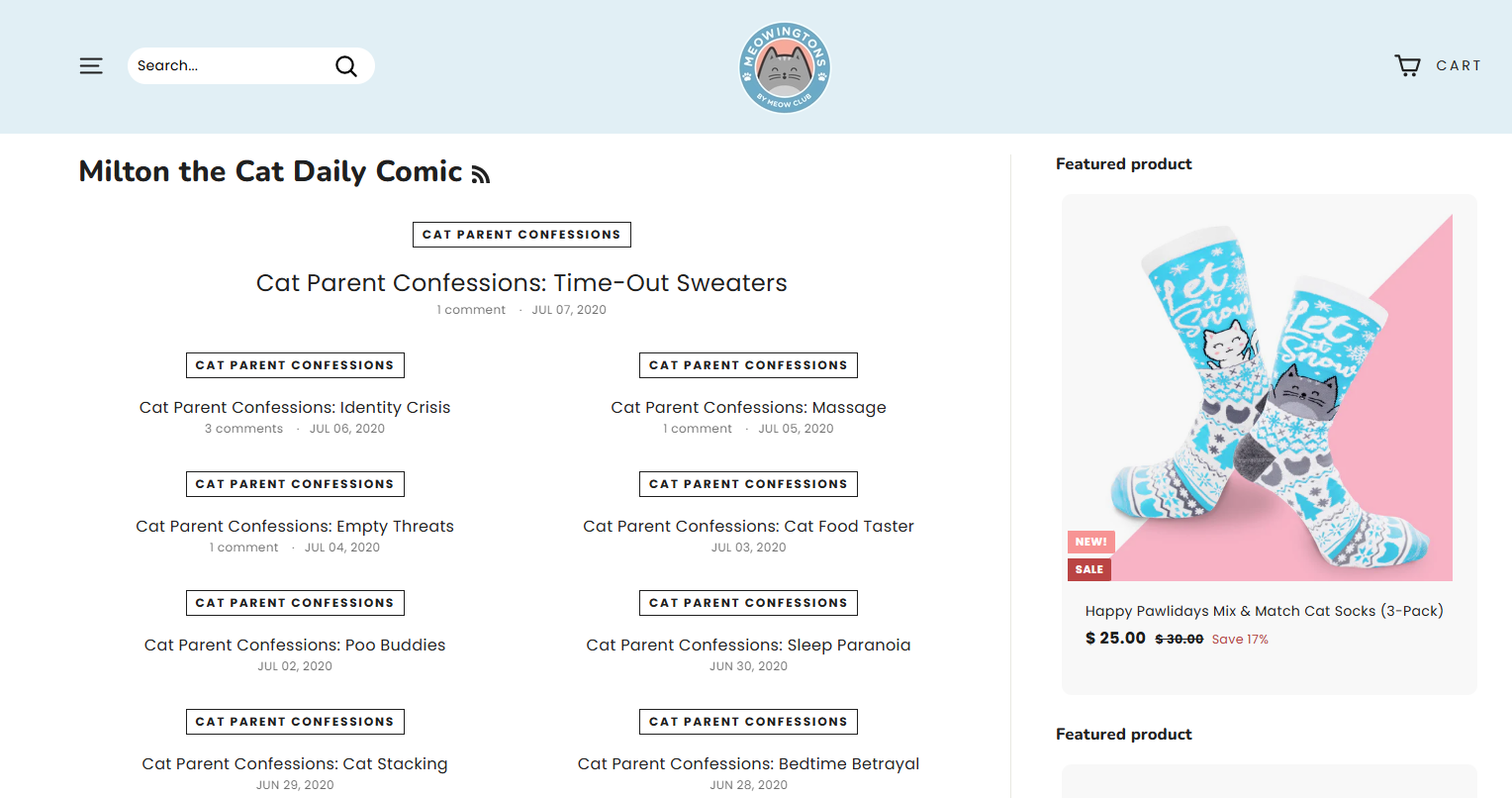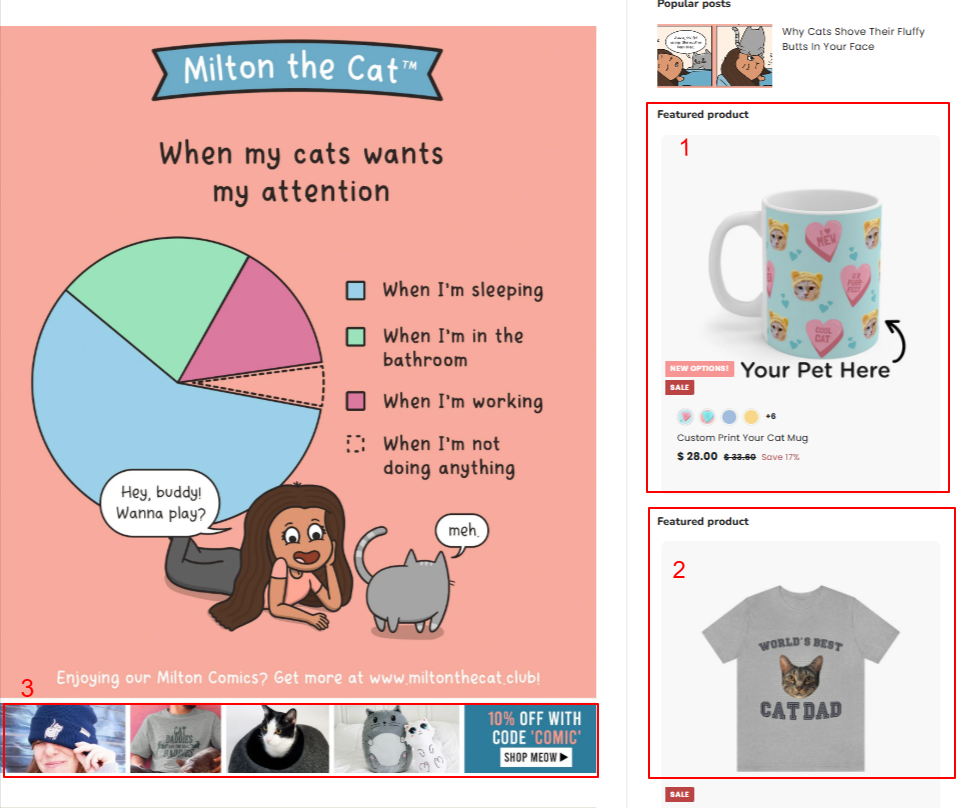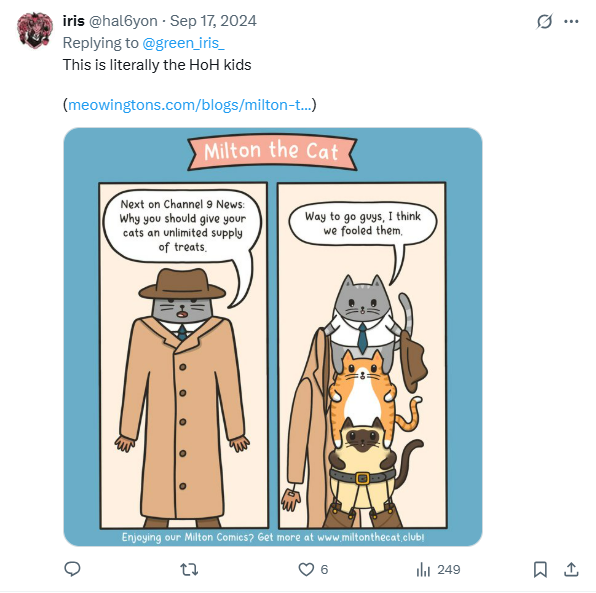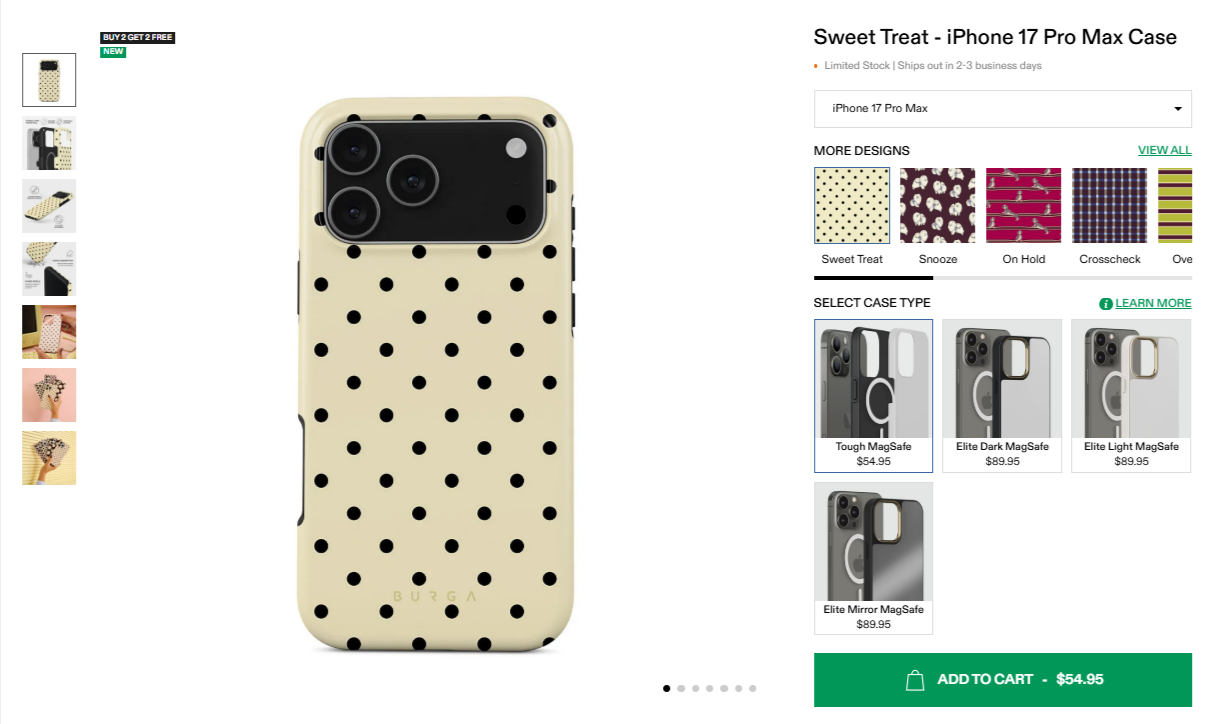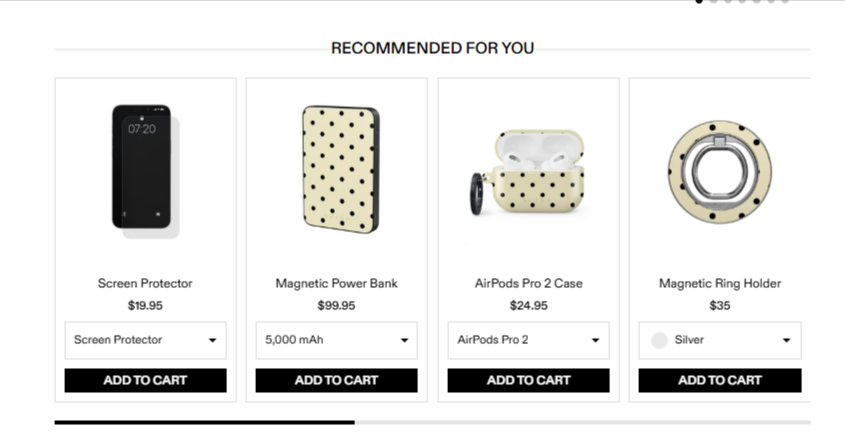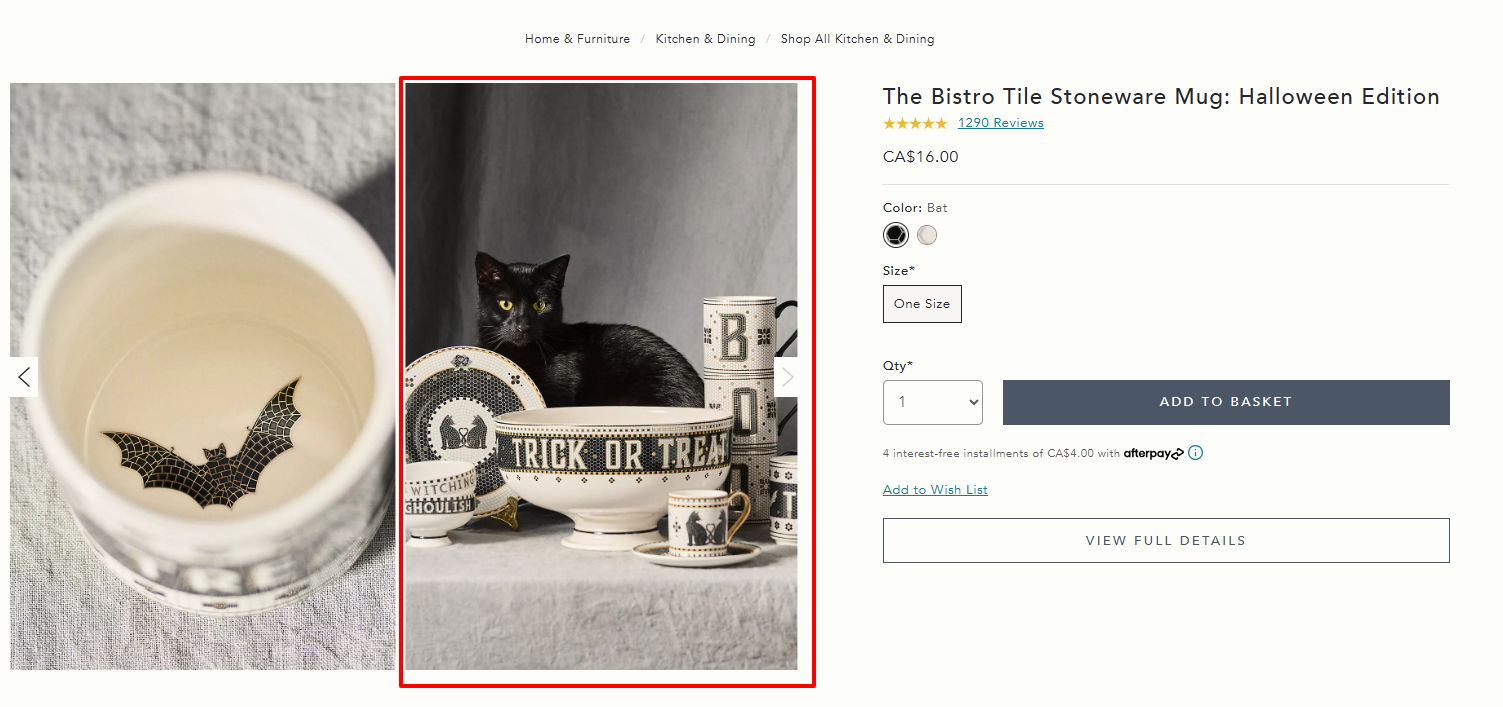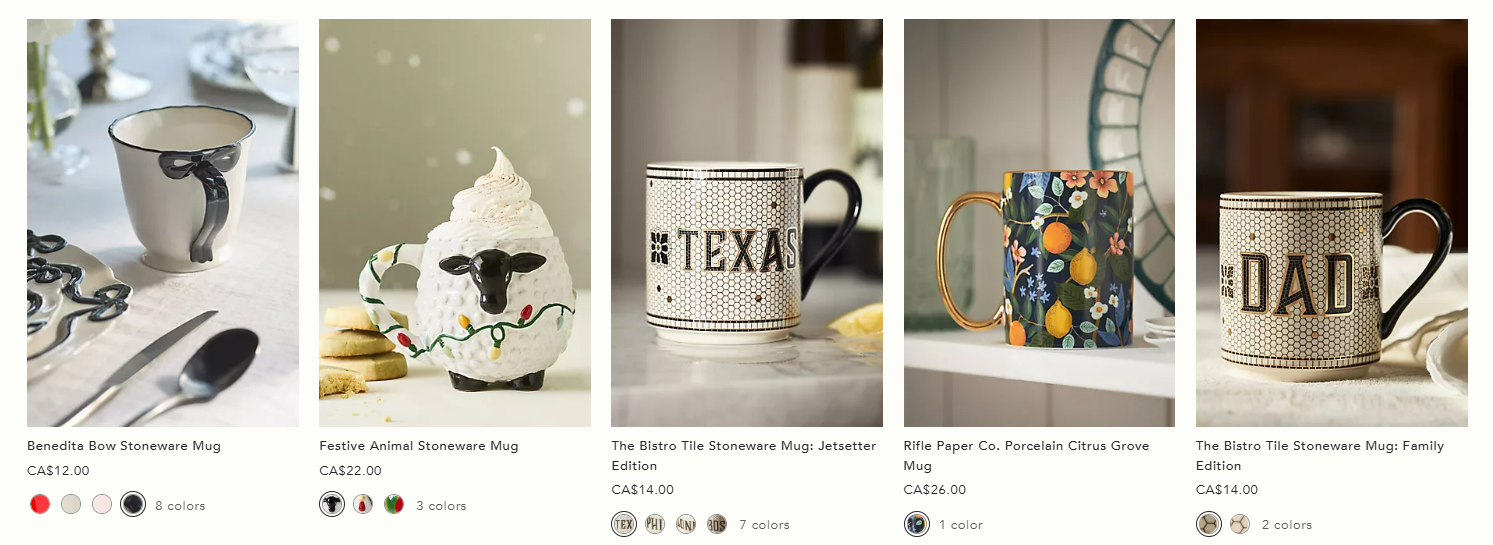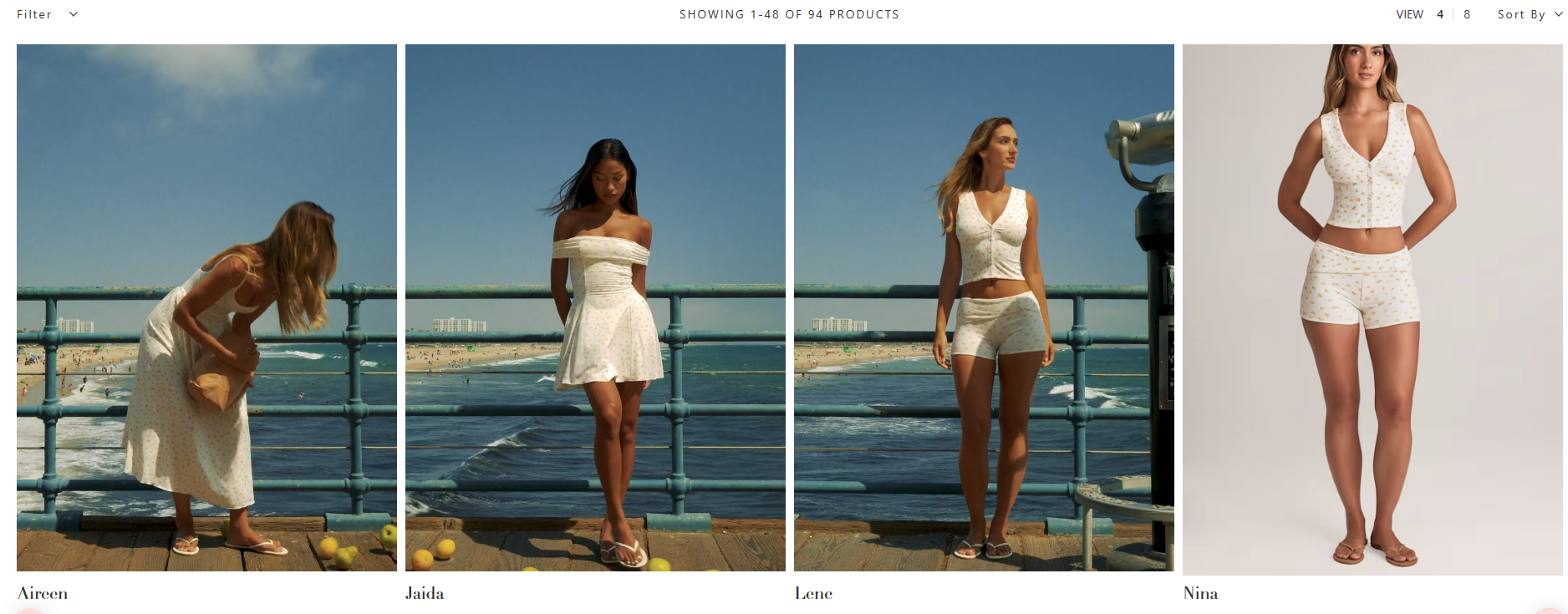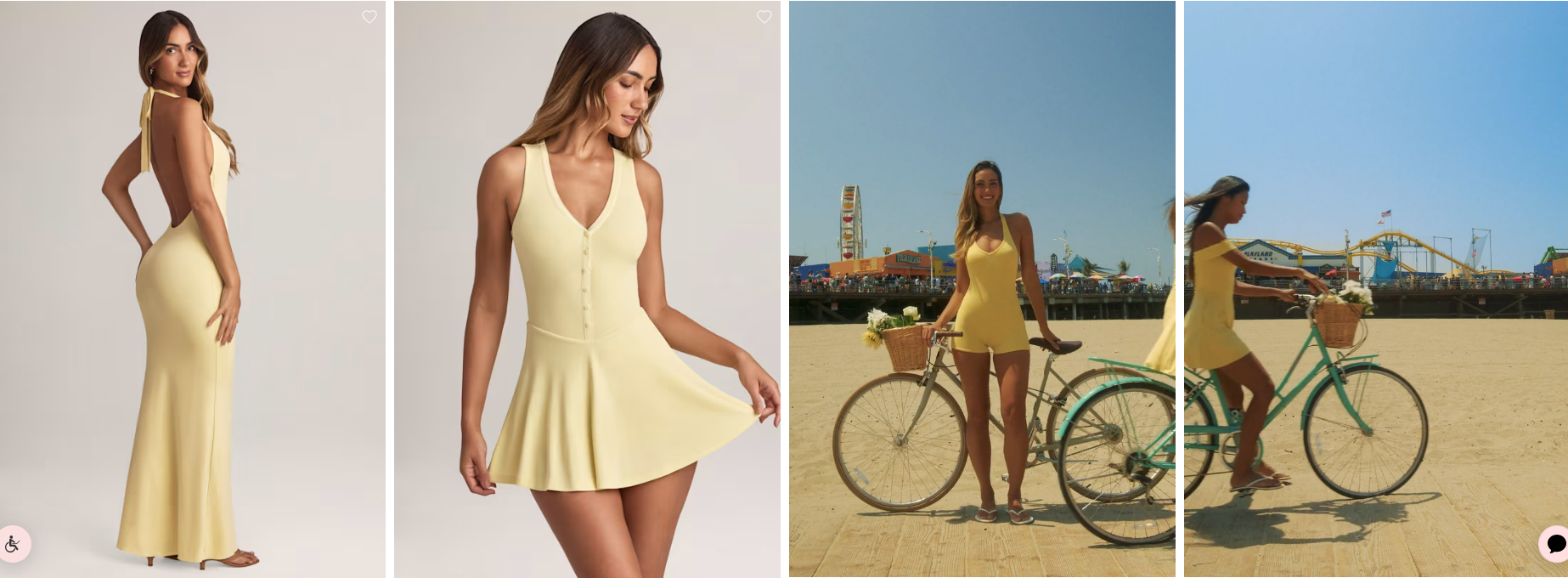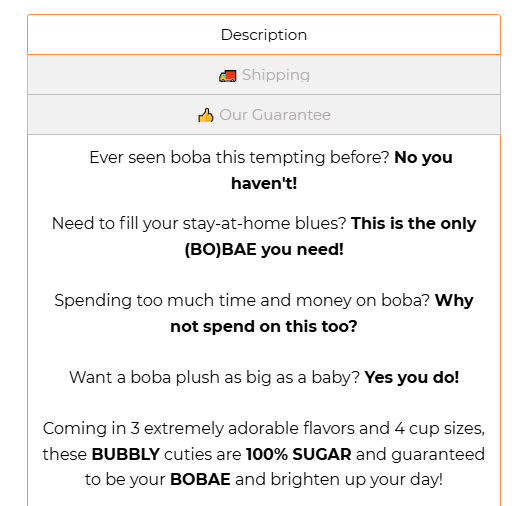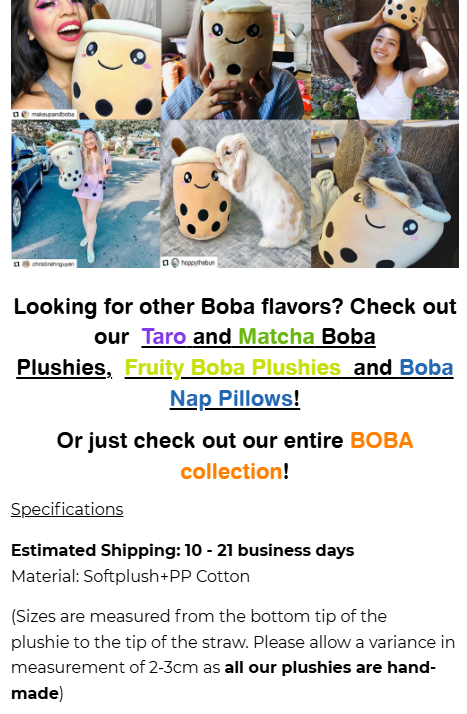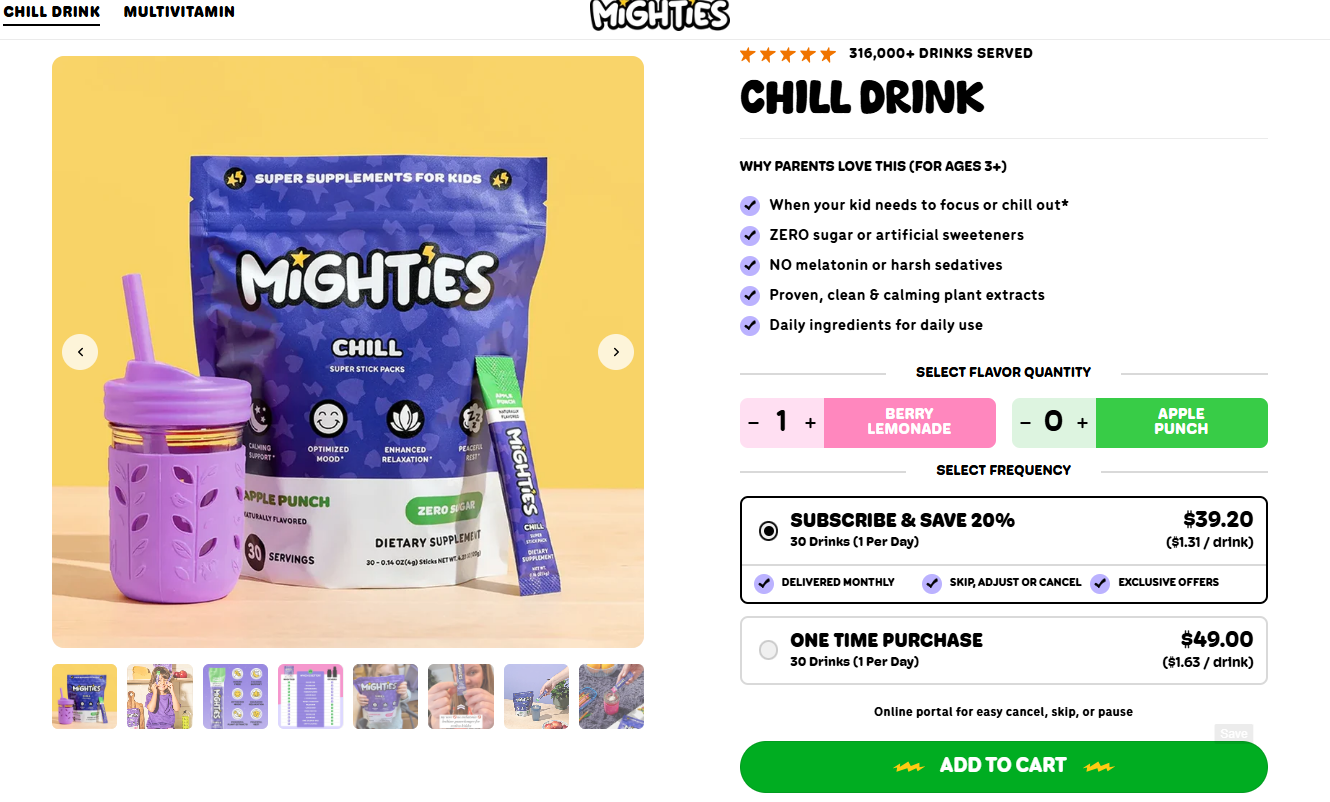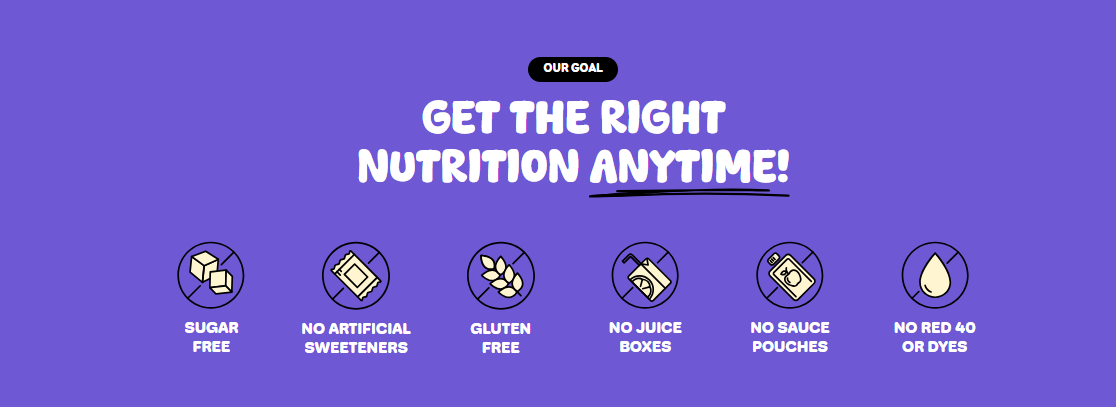7 Top Successful Dropshipping Stores in 2025 (+ Winning Code)
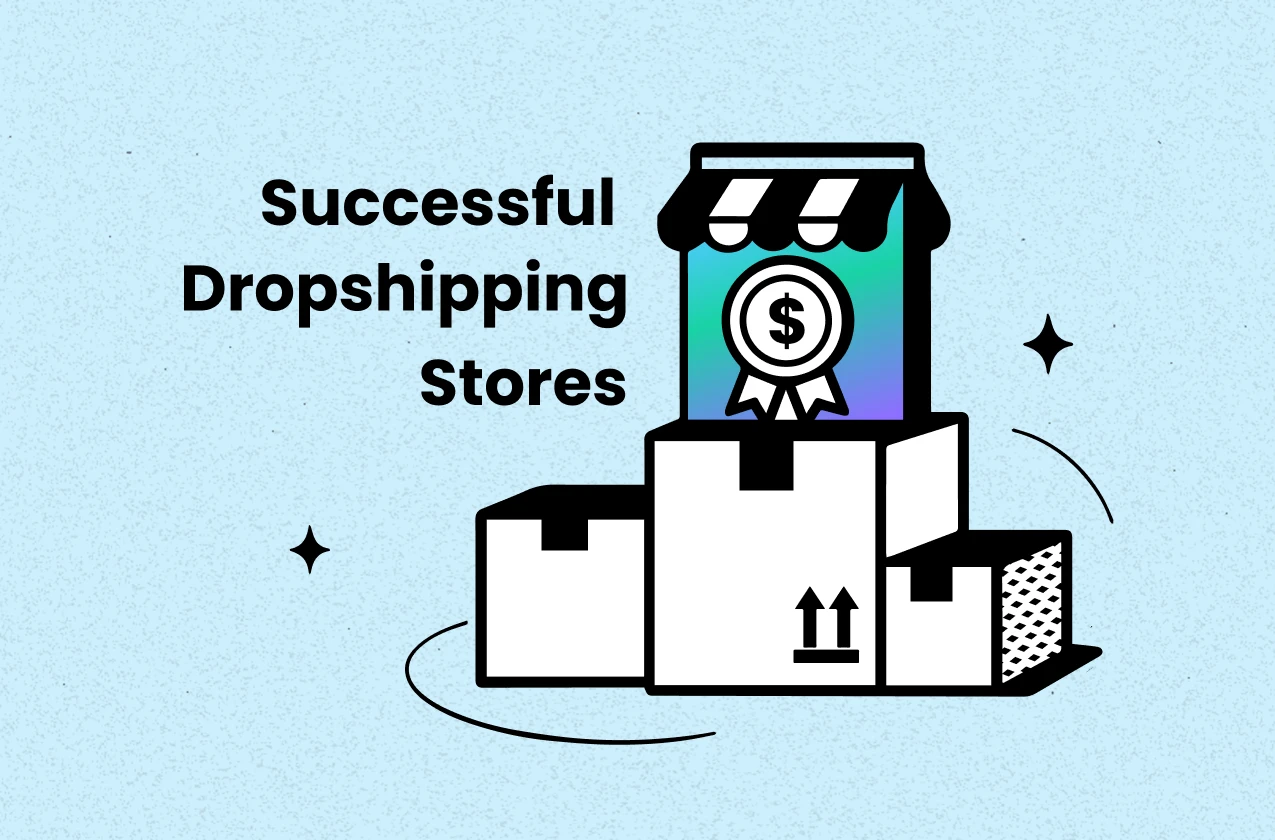
If you’re new to dropshipping, it’s natural to wonder what separates the best stores from the thousands that never make it. The truth is, the most successful dropshipping stores don’t just pick the right products—they master branding, store design, and data-driven decision-making.
Below, we’ll explore some of the top successful dropshipping stores in 2025 and break down exactly what makes them thrive.
7 Top Successful Dropshipping Stores & Winning Strategy Exposed
Here’s a quick overview of the stores we’ll cover and the niches they dominate:
Store Name | Niche | Key Strategy |
|---|---|---|
NotebookTherapy | Japanese & Korean Stationery | – Escape the “cheap dropshipping” trap with a premium hero product and strong branding |
Meowingtons | Cat Products & Accessories | – Build a club for cat lovers to increase engagement, time-on-site, and repeat visits |
Burga | Fashion Tech Accessories | – Transform low-ticket products into high-fashion accessories, boosting cart value |
Anthropologie | Lifestyle & Home Goods | – Guide customers to shop full collections, turning single-item interest into multi-item baskets |
Oh Polly | Fashion & Apparel | – Design cinematic PDPs where one product visual naturally leads to the next, increasing AOV |
Subtle Asian Treats | Snack & Lifestyle Products | – Let winning products demonstrate their own power, relying on proven demand and trends |
Mighties | Children’s Toys & Lifestyle | – Carefully craft high-converting PDPs where every element drives attention, trust, and purchase |
1. NotebookTherapy – Escape the ‘Cheap Dropshipping’ Trap
NotebookTherapy sells Japanese and Korean stationery worldwide. Its catalog includes bullet journals, pens, pencil cases, and tote bags—items that can easily feel cheap in a dropshipping store. Yet NotebookTherapy avoids that impression, even though it follows the same dropshipping model as everyone else.
The secret? Instead of chasing viral AliExpress products and competing on price, NotebookTherapy built its brand around a single hero product: the Tsuki journal.

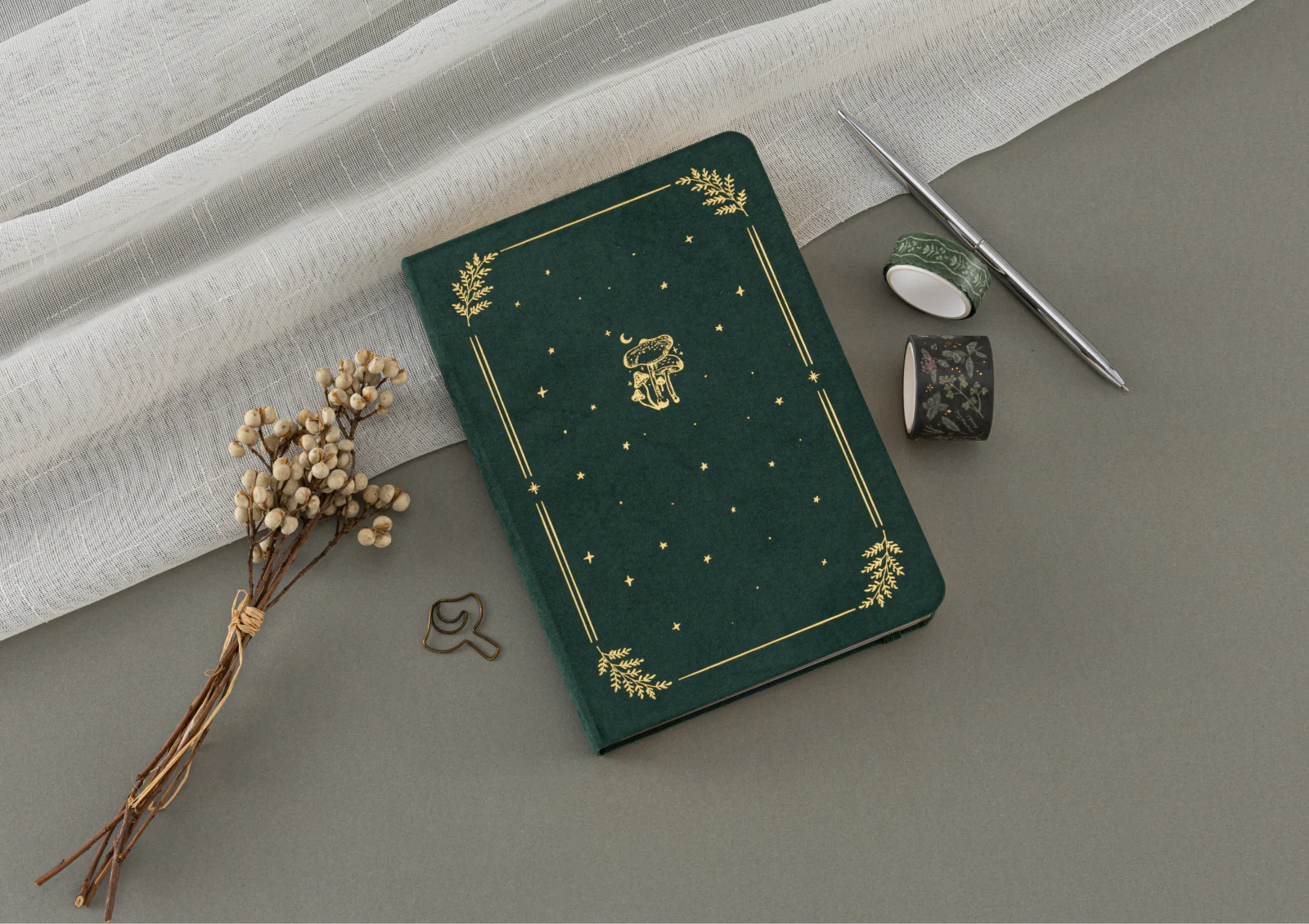
With high-quality paper, fountain-pen friendly pages, no ink bleed, and beautifully designed covers, the Tsuki series feels truly premium. That one product sets the tone for the whole brand, making it look curated and trustworthy rather than generic.

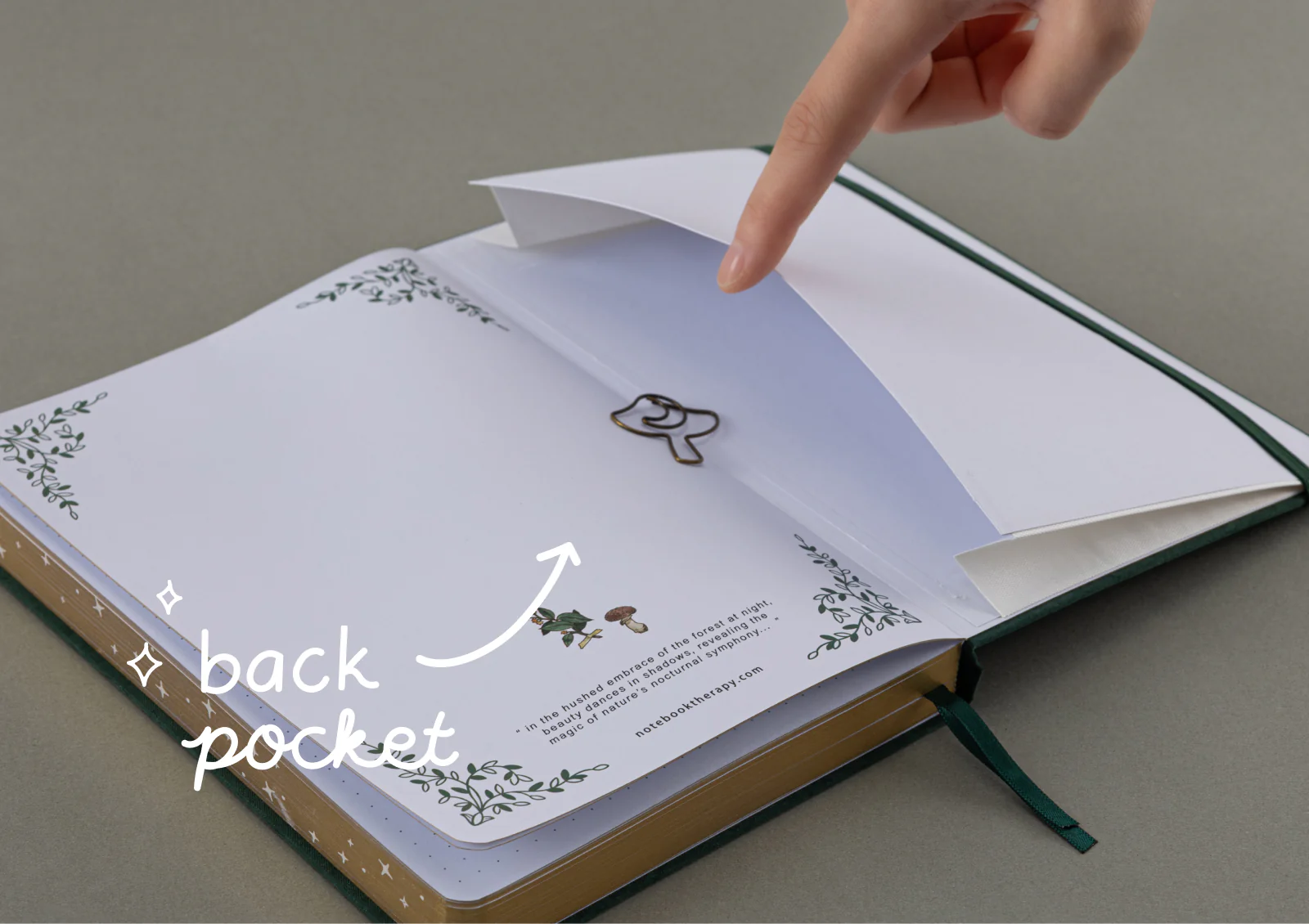
Once customers trust the quality of Tsuki journals, they see other low-tickets products—washi tapes, pens, tote bags—not as random AliExpress products, but as add-on-accessories that naturally complete their journaling lifestyle.
How It Impacts:
This approach leads to higher average order value, bigger orders without raising acquisition costs, all while removing the “AliExpress clone” labels.
2. Meowingtons – Build a Club for Cat Lovers
Meowingtons is nothing more than another pet dropshipping store until it did this: Built the whole club for cat parents.
On the site you’ll find Cat Confessions, Wednesday Wisdom, and even the Milton the Cat comic series—all designed to keep customers on-site longer and keep coming back to the site even when they’re not buying anything.
And here's how this club helps Meowingtons boost sales:
They sneak product features throughout all the columns. A basic comic strip about cat scratching might feature a “Your Cat Mug,” “Cat Dad T-shirt”, or “Cat Bed”, etc. This way, visitors don’t feel like they’re being sold to, but it’s more that they’re entertained, then nudged toward products naturally.
How It Impacts:
This approach brings in three things:
Repeat traffic: Fans revisit weekly for comics or wisdom posts, keeping Meowingtons top of mind without new ads.
Higher time-on-site: The longer visitors stay—the more chances Meowingtons has to convert them without relying solely on product pages.
Free social mentions: A comic or meme is infinitely easier to share than a product page. When a fan posts a Milton strip on Twitter, Meowingtons gets free brand impressions and referral clicks.
Higher add-to-cart rate: More time spent reading means more exposure to product placements. This raises the likelihood they'll add it to cart compared to a cold product page.
3. BURGA – Low-Repeat Product Yet Make Every Cart Bigger
Burga is a lifestyle brand that sells ordinary everyday products—like iPad and MacBook cases, AirPods cases, drinkware, Apple Watch bands, screen protectors, and even notebooks. They’re all low-CLV items - typically the one-time purchase, customers buy one and they rarely return to buy again.
One of the smartest moves Burga has made is marketing their products as high-fashion accessories—something customers can swap, match, and collect—This shift allows Burga to charge 2–4x more than a standard commodity case other dropshippers might find on Amazon. And the best part? Customers recognized it as the highest tier in the phone case market, and remained willing to pay a premium for it.
Even better, here’s how Burga designs its product page to maximize Average order value (AOV).
First, customers can build their own bundle (case + magnetic power bank + ring holder + screen protector) rather than buying a single item.

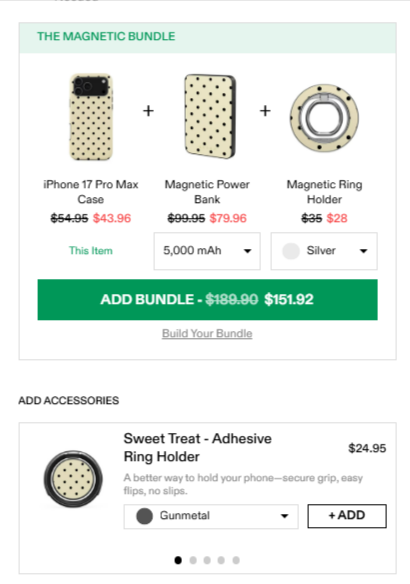
Then, the page suggests add-ons like AirPods cases, MacBook covers, or screen protectors, encouraging customers to create a coordinated set.
The Add to cart button typically sits above the fold, yet, as customers scroll, a sticky bar appears and keeps the checkout button in view, reducing abandonment and keeping purchase intent top-of-mind.
Together, every design element is built to maximize revenue on the first purchase—a critical move in a low customer lifetime value category like phone cases.
How It Impacts:
Higher average order value on the first purchase and a better chance of return purchases in the future.
4. ANTHROPOLOGIE – Boost AOV Without Cold Bundles
On the Burga store, we already looked at how it optimizes PDP to focus on upselling and bundling. However, not all upselling needs to feel direct or transactional like this. Anthropologie proves you can totally lift AOV in a much softer way.
Take the Bistro Tile Stoneware Mug as an example. At first glance, you’d expect the PDP to highlight the mug itself. Instead, the imagery places it alongside the broader collection—spooky kitchenware, matching plates, and coordinating décor—prompting shoppers to imagine owning the entire set rather than stopping at just one item.
Scroll further, and the strategy becomes even clearer. Instead of filling the page with more visuals or details about the mug itself—as many brands typically do—Anthropologie dedicates that space to inviting customers to “Shop the Collection”. They smartly use quick-shop buttons, making it effortless to browse and add complementary products without leaving the page.
How It Impacts:
The frictionless browsing flow reduces effort and makes multi-item purchases feel natural.
It appeals to both impulse buyers who want to check out quickly and thoughtful shoppers who want to explore the full range before committing.
5. Oh Polly – Break the Boring Clothing Collections
Most fashion websites follow the same formula: endless grids of static images, clean but predictable. Oh Polly, a UK-based fashion brand, challenges this old model by rethinking what a product page can do. Instead of treating PDPs as the last step in the funnel, they use them as attention magnets.
In their recent ‘Soft Season’ collection, instead of relying on static product images, Oh Polly built cinematic PDPs where one product visual leads to the next one.
In one sequence, a dropped ice cream cone spills seamlessly into a cup in the tile below.

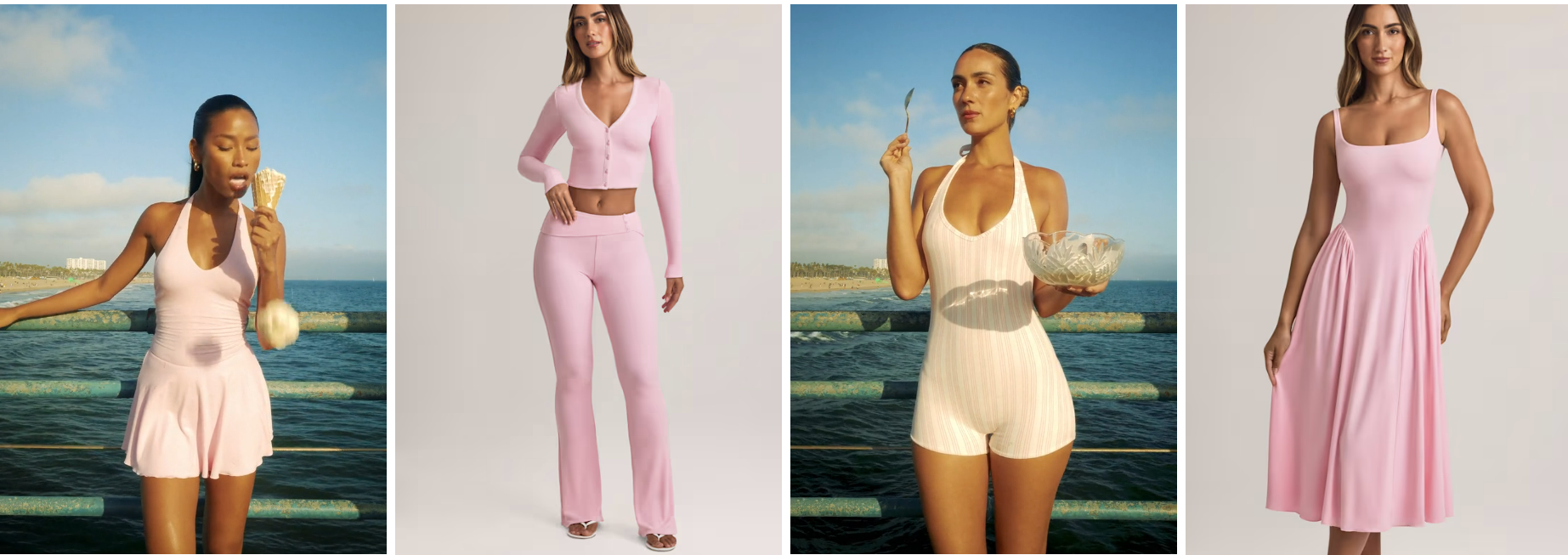
In another, lemons tumble from one frame into the next, pulling the shopper’s eye across the page.
And more sequences with the same approach across the whole catalog:
In this way, Oh Polly transforms a single browsing session into a journey across the collection.
How It Impacts:
- It keeps time-on-site longer. Instead of bouncing after a quick scroll, customers stay longer because the page itself entertains.
- It guides product discovery. The visual flow pulls shoppers toward items they might not have clicked otherwise.
6. Subtle Asian Treats – Squeeze the Winning Products
Every dropshipper knows that product choice can make or break a store. Tze Hing Chan proved this when he co-founded Subtle Asian Treats, a shop selling bubble tea plush toys that generated $19,000 in profit in just two months.
But here’s the important part: Tze didn’t get there overnight. He cycled through phone cases, kitchenware, and even martial arts products before finding success with toy plushies.

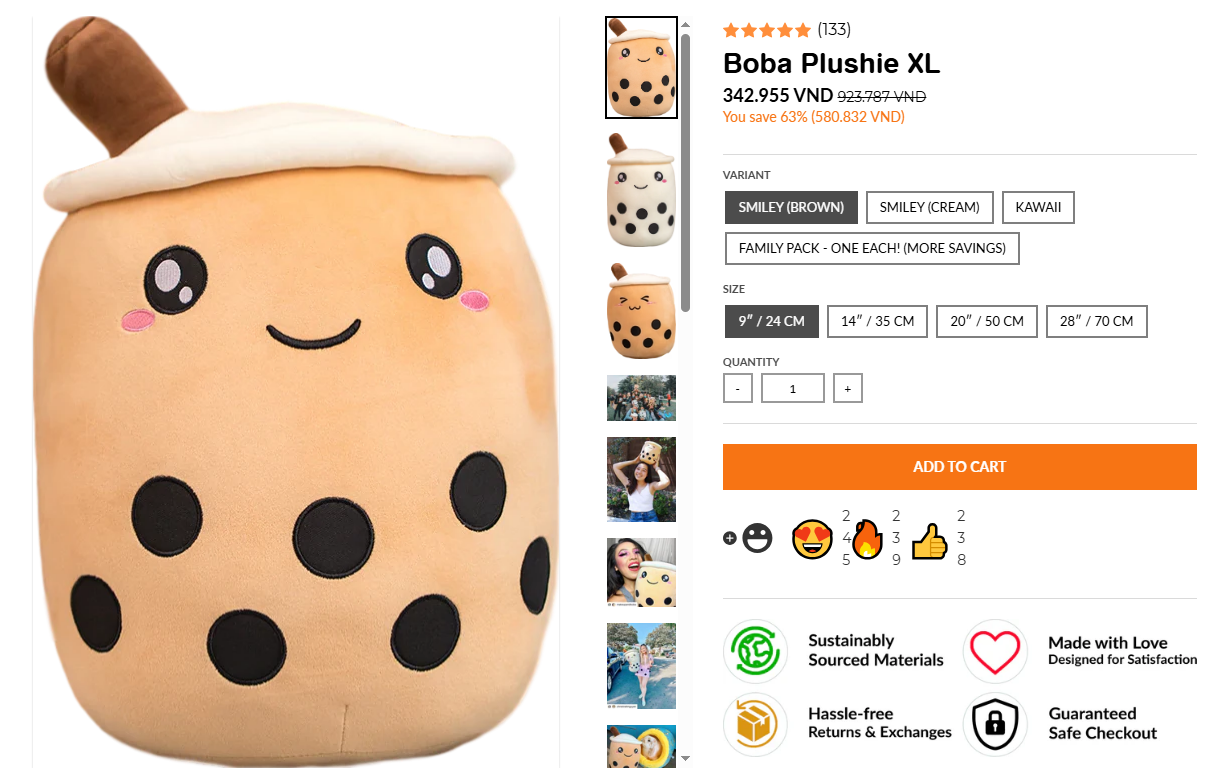
What’s funnier is that Tze didn’t treat product descriptions as something to copy from a supplier and paste into their store. Instead, his copy lines made people smile, spoke directly to his audience, and gave the product a voice of its own.
His product pages also clearly listed shipping times and where items came from, information most dropshippers hide until checkout. So customers knew exactly what to expect before they hit “Add to Cart.”
How It Impacts:
When shoppers saw clear expectations written out, they were less hesitant to add items to cart, which translated into higher add-to-cart and checkout completion rates.
7. Mighties – Play the Color Psychology Game
At first glance, Mighties’ product page looks fun and flashy—bright colors, playful doodles, bold copy. But look closer, and you’ll see that every single element is intentional, built to set shoppers up for the best possible buying moment.
The flavor and quantity selector isn’t just a nice feature—it gives parents control, shows live price updates, and makes the subscription option more appealing. The bright yellow accents don’t just look cheerful—they guide the eye to the CTA, the value props, and the “better” choice. Even the Add to Cart button stands out with doodles that make it impossible to miss.
Scroll a bit further and a clean comparison chart seals the deal. Sugar-free. Packed with vitamins. No artificial dyes. Side by side, it’s crystal clear why Mighties wins against the alternatives.
And the reviews copy? Lines like “Better focus” and “love the taste” might sound bold, but they cut through the noise and get straight to the point: Make it buyable.
How It Impacts:
When customers are ready to purchase, Mighties ensure they have the best deal: Their order is worth more, their trust is stronger, and the chance they’ll convert is higher.
6 Things Successful Dropshipping Stores Have in Common
If you look closely at the best-performing dropshipping stores—from Burga to Mighties to Subtle Asian Treats—you’ll notice they don’t succeed by accident.
Each one is built around a few key principles that set them apart from generic, throw-it-up-and-hope-for-sales shops.
1. Branding as the Differentiator
With so many dropshipping stores offering the same items, branding is the factor that makes your store stand out. A clear identity, tone, and design make it easier for customers to remember your store and choose it over competitors. And even if the product itself isn’t expensive, a strong brand can turn a low-cost item into a high-margin sale —which directly impacts profit performance.
2. Build Product Pages to Convert
The most successful stores treat PDPs as intentional, strategic assets, where every element exists to guide the customer toward purchase. Buttons are placed to reduce friction, product recommendations are positioned to encourage complementary purchases, and layout decisions are made to highlight what matters most to the buyer.
3. Optimize for The Bigger Cart Value
If a customer buys one item, the profit will end there. That’s why most of these stores guide their shoppers toward complementary add-ons, bundles, or accessories — naturally expanding each order, maximizing revenue from every purchase.
4. Treat Website as the Complete Sale Funnel
Top dropshipping stores understand that every page on the website is part of the sales funnel, not just the product page. From content, blogs, and community features to sticky carts and recommended bundles, every element is designed to capture attention, nurture trust, and guide a customer toward checkout.
5. Focus on One Hero Product
Instead of trying to make every product special, successful dropshipping stores usually identify their highest-performing item and position it as the hero product of their store—a single item that defines their brand, draws attention, and carries the entire store’s performance.
6. Keep a Close Eye on Store Performance
Key business performance metrics—add to cart rate, conversion rates, average order value (AOV), and net profit—reveal the true health of a dropshipping store. By tracking performance, you can identify winning products, spot low-converting PDP, and optimize more with confidence that they will directly impact the ultimate revenue.
When you look at the best-performing beauty dropshipping stores—whether it’s CurrentBody, Burga, or Subtle Asian Treats—you’ll see a common thread. They don’t grow by chance. Their success is built on a set of clear principles that turn ordinary stores into recognizable brands with strong profits.
Grow Your Store with Profit in Mind
True growth happens when every decision is measured against its impact on your bottom line—it’s also the winning code of dropshipping success. When you measure and analyze performance with precision, every decision becomes smarter, every experiment more impactful, and every dollar invested more likely to drive real, sustainable profit.
That’s why dropshipping stores that scale usually rely on tools like TrueProfit—the #1 Shopify net profit analytics app. It lets you:
- Track true profit and loss in real-time.
- Monitor all key business performance metrics in one single dashboard.
- Capture every expense automatically, so no hidden costs eat away your margins.
If you want to play in the same league as these top dropshipping stores, mastering your data is the code to winning.
Final Thoughts
The best dropshipping stores in 2025 prove one thing: success is not about picking random winning products. It’s about building trust, tracking metrics, and adapting to market shifts. Take inspiration from these examples, but remember—the real winning code is how well you run and optimize your business based on the accurate data, not guesswork.
Leah Tran is a Content Specialist at TrueProfit, where she crafts SEO-driven and data-backed content to help eCommerce merchants understand their true profitability. With a strong background in content writing, research, and editorial content, she focuses on making complex financial and business concepts clear, engaging, and actionable for Shopify merchants.

